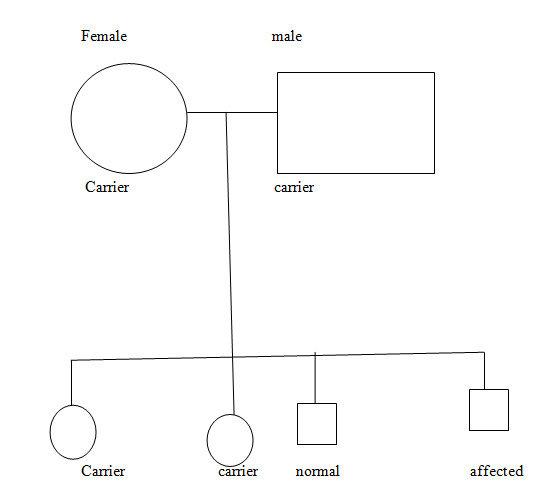Phenylketonuria is inborn error of metabolism. Individual born with this error of metabolism have not ability for metabolize the amino acid phenylalanine. The gene with defect location is on chromosome 12 (Williams, 1994). Phenylketonuria is autosomal recessive disorder. The gene with problem must be received from both parents for one to get disease. People who are heterozygous are free from symptom associated with the disease. In European population the incidence is varies from 1 in 5000 to 1 in 20000 (Williams, 1994).
The abnormal gene is lead to synthesis of phenylalanine hydroxylase with problem. In some cases the enzyme necessary for synthesizes of a cofactor called tetrahydrobiopterin contain the defect. If phenylalanine hydroxylase is not there, phenylalanine is not metabolized and it accumulate in the body. Its metabolite called phenylpyruvic acid is accumulates also in tissues.
The clinical feature of phenylketonuria is:
- Mental retardation developing at between 4 and 6 months, with psychomotor irritability (Crook, 2006).
- Pale skin, light eyes, and light hair. This is because those affected have reduced in melanin synthesis.
- Vomiting and other gastrointestinal tract disorder during the first few weeks after being born.
- Tremors, jerking movement of limb and seizures are also associations with the disease.
- A characteristic smell may be found in the urine, breathe, skin and linen of the suffering infants. The odor is called ‘musty’ or ‘mousy’.
- Infants who suffering from the disease may have generalized eczema.
The disease is diagnosed in uterus or immediately after birth. Blood and urine are the most specimens widely used. Unborn babies are screened on phenylketonuria using chorionic villi assays. After birth, infants can be checked using method like heel prick test and Guthrie test. Heel prick test is more reliable test of blood.
Testing to detection of excess phenylketones in urine, using Guthrie test, though much simple, is not satisfactory as there are many false negative (Baron, 1989). Mothers are also be screened for the disease to avoid overexposure of the unborn baby to excess phenylalanine in uterus. Phenylketonuria should be screened on in all children who have attained the age of six days (Baron, 1989). There is many false positive when the test is done before age six days.
The condition management is through following of strict dietary routines. Baby with phenylketonuria are fed by a diet low in phenylalanine. Refusing of food containing Phenylalanine is maintained through life. People who follows this diet routine live normal life. Pregnant women who are known carriers are also told to eat diet low in phenylalanine.
Dietary restriction during pregnancy is necessary to avoid exposing the baby to excess maternal phenylalanine. Exposure to excess phenylalanine in uterus has been shown to causing mental retardation. Artificial sweeteners with aspartame should be avoided also. Aspartame is converted in our human body to phenylalanine. Fish and other sources of long chain fatty acids should be eaten also.
Punnet square diagrams

When both parents are carriers, there is a 25% chances getting affected child. Half their children is carriers of the defective gene while 25% will suffering from the disease. This disease is not sex linked; therefore equal risk for all children the get disease.

When one parent is normal and the other is carrier, half their children will normal and half will be carriers of the gene with defect.
References
Baron, D., Whicher, J. T., & Lee, K. E. (1989). A New Short Textbook of Clinical Pathology (5th ed.). Bedford Square, London: Hodder and Stoughton Ltd.
Crook, A. M. (2006). Clinical Chemistry and Metabolic Medicine (7th ed.). London: Edward Arnold Ltd.
Williams, L. D., & Marks, V. (1994). Scientific Foundations of Biochemistry in Clinical Practice (2nd ed.). London: Oxford UP.